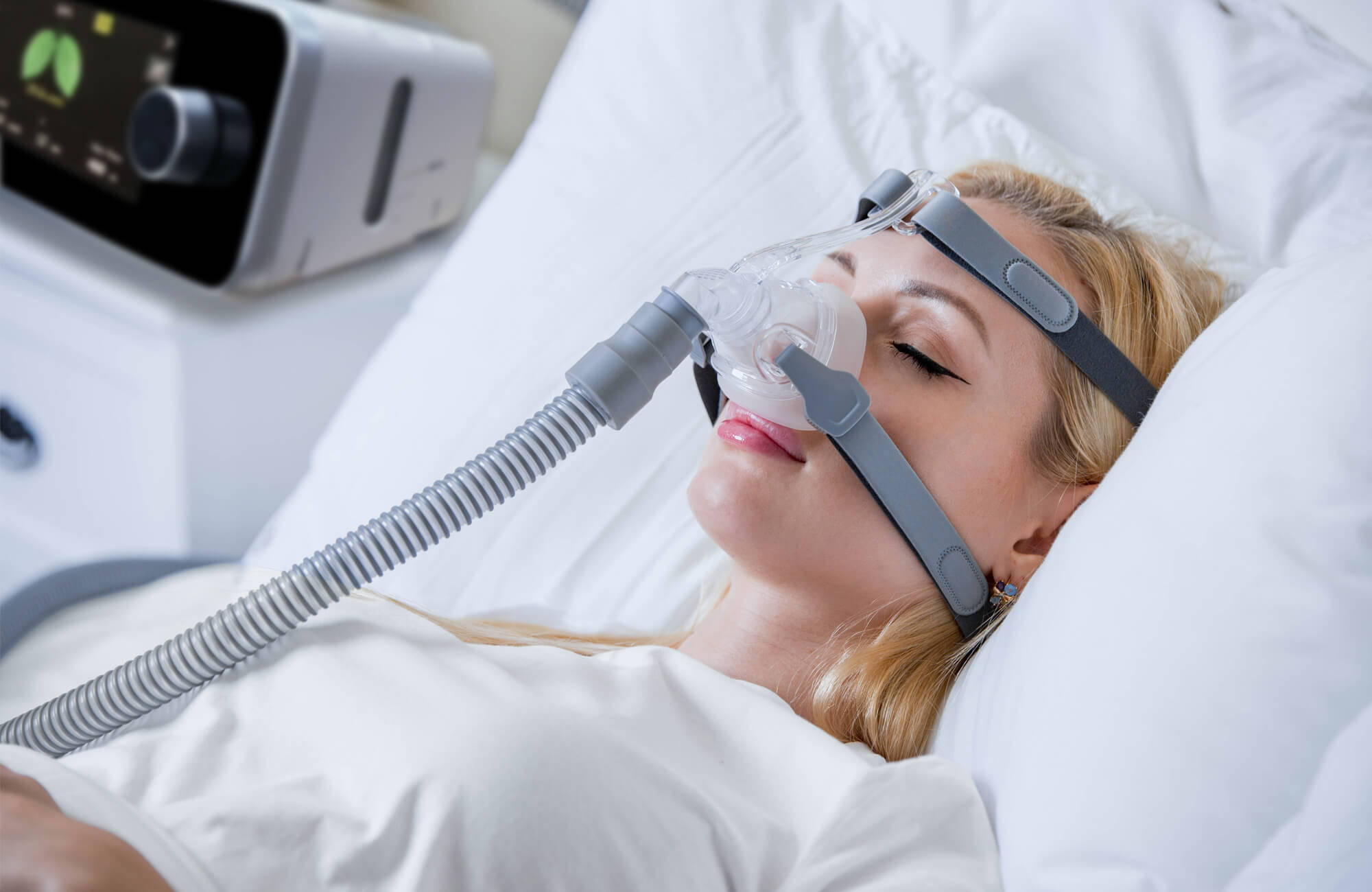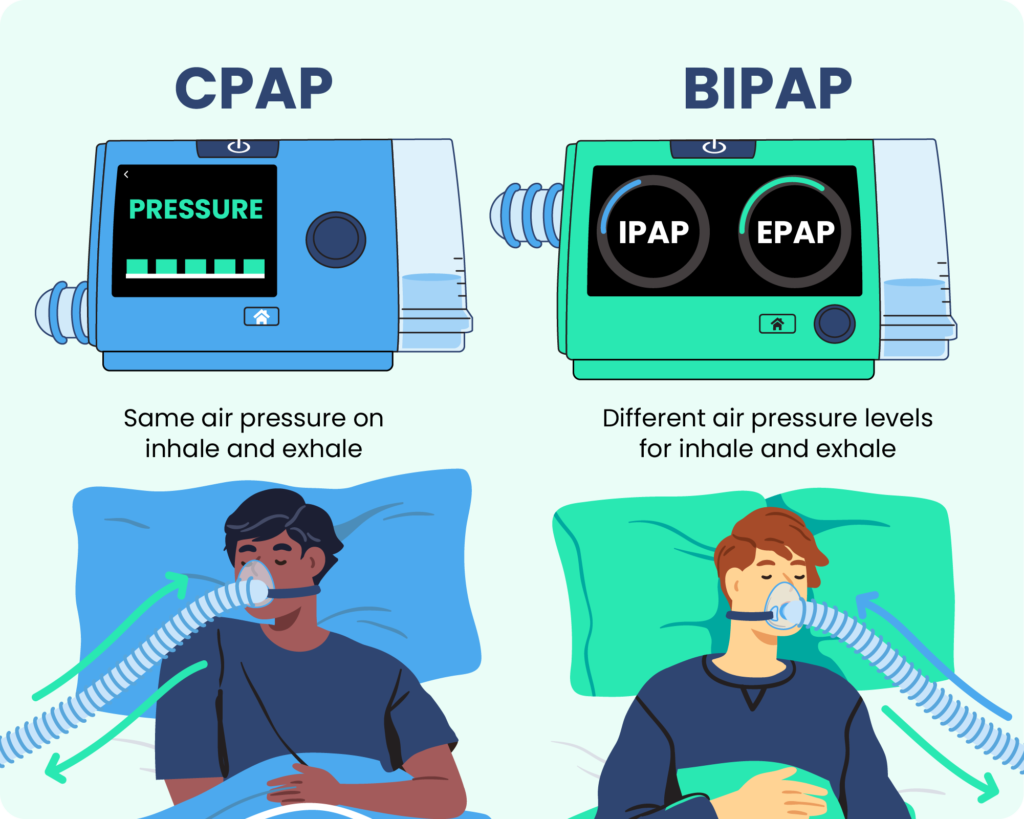Why BiPAP Rental is Ideal for Travel and Temporary Use
Why BiPAP Rental is Ideal for Travel and Temporary Use
Blog Article
Bipap vs. CPAP: Which Is the very best for Your Rest Condition?
When navigating the intricacies of rest disorders, the option between BiPAP and CPAP therapy is an important consideration. Each modality uses one-of-a-kind advantages tailored to certain problems, yet the choice rests on private person requirements and convenience degrees. While CPAP offers a consistent airflow ideal for obstructive sleep apnea, BiPAP's dual stress setups might boost convenience for those with more complex respiratory issues. Recognizing these differences can significantly influence treatment efficiency, leaving one to ponder which alternative really lines up with their health needs and way of living.
Recognizing Rest Disorders
Rest conditions include a variety of problems that interrupt typical rest patterns, affecting both the top quality and duration of rest. These problems can manifest in different types, consisting of sleeping disorders, sleep apnea, narcolepsy, restless leg disorder, and parasomnias. Each problem presents unique challenges, often bring about considerable daytime tiredness, cognitive impairment, and psychological disturbances.
Sleeplessness is identified by problem dropping or remaining asleep, while sleep apnea involves repeated disruptions in breathing during rest, often leading to fragmented rest. Narcolepsy, on the various other hand, is noted by too much daytime sleepiness and unexpected rest assaults. Agitated leg disorder creates uncomfortable sensations in the legs, triggering an irrepressible impulse to relocate them, which can also impede the ability to sleep.
The effect of rest disorders extends past private wellness, affecting overall productivity, partnerships, and quality of life. Understanding the details nature of each problem is important for efficient medical diagnosis and treatment. As rest wellness comes to be progressively identified as a vital component of overall health, resolving these conditions is important for enhancing both rest quality and everyday performance.
Exactly How CPAP Works
Continuous Positive Respiratory Tract Pressure (CPAP) treatment is often employed as a main treatment for obstructive sleep apnea (OSA) The device of CPAP entails using a maker that supplies a stable stream of air through a mask used throughout sleep. This airflow preserves positive stress in the respiratory tract, avoiding the collapse or blockage of the throat that can occur throughout rest.
When a client inhales, the CPAP machine supplies a continual circulation of air, ensuring that the respiratory tract continues to be open - BiPAP Rental. This not only minimizes the symptoms of OSA, such as snoring and interrupted rest patterns, but also minimizes the affiliated wellness threats, including cardio problems and daytime exhaustion
The pressure settings on a CPAP device can be personalized to satisfy private client demands, typically established via a sleep research. In general, CPAP treatment has been revealed to considerably improve the high quality of rest and general wellness for individuals experiencing from obstructive rest apnea.
Just How BiPAP Functions
BiPAP, or Bilevel Positive Respiratory Tract Stress, is a specific type of non-invasive ventilation that is particularly valuable for individuals with problems such as intricate sleep apnea or respiratory conditions. Unlike CPAP, which supplies a continuous stream of air at a single pressure, BiPAP offers 2 distinctive stress settings: a greater inspiratory stress for breathing and a lower expiratory stress for exhalation. This dual-pressure technique enables for much easier breathing, minimizing the initiative required throughout exhalation.
The tool you could try these out operates via a mask fitted over the nose or mouth, attached to an equipment that creates air stress. When the client inhales, the device delivers the higher stress to help with airflow, making sure that the air passage remains open. Upon exhalation, the machine instantly lowers the stress, making it much more comfortable for the person to take a breath out.

Trick Differences In Between BiPAP and CPAP

In comparison, BiPAP (Bilevel Positive Respiratory tract Pressure) uses 2 different stress setups: one for inhalation and a lower one for exhalation. This double stress system allows for more comfy breathing, specifically for patients who battle with exhaling against a constant stress. BiPAP is typically recommended for individuals with complex sleep apnea, persistent obstructive pulmonary illness (COPD), or those that call for additional support during rest.
In addition, the intricacy of BiPAP devices usually causes a greater price and calls for much more cautious titration than CPAP. BiPAP Rental. Comprehending these key distinctions can assist in recognizing which device may be browse around this web-site better for certain rest problems, establishing the foundation for educated treatment decisions
Selecting the Right Treatment
Just how can one establish one of the most ideal treatment for handling sleep conditions? The decision between BiPAP and CPAP treatment largely rests on the certain features of the rest problem, the individual's total health and wellness, and their comfort with the gadget. CPAP, which delivers a continuous stream of air, is commonly suggested for obstructive rest apnea (OSA) It preserves an open air passage during sleep, effectively avoiding apneas and hypopneas.
Conversely, BiPAP offers two levels of pressure: one for inhalation and a lower one for exhalation. This double pressure system is useful for patients with intricate rest apnea or those who experience problem exhaling versus a continuous stress. Additionally, BiPAP is usually advised for people with respiratory problems, such as chronic obstructive lung condition (COPD), where varying stress setups can improve convenience and compliance.
Inevitably, a detailed assessment by a rest specialist, consisting of a rest study, can assist determine which therapy straightens best with the individual's demands. Elements such as convenience, convenience of use, and certain clinical conditions ought to additionally be taken into consideration to enhance therapy outcomes.
Conclusion
In recap, both BiPAP and CPAP serve distinct functions in the administration of sleep conditions. CPAP works for obstructive rest apnea via regular air movement, while BiPAP supplies twin stress setups that boost convenience for those with complicated rest apnea or breathing problems. The option between these therapies should be guided by individual needs and problems, demanding a thorough analysis by a rest expert to make sure ideal treatment outcomes and improved top quality of rest.

Overall, CPAP therapy has been revealed to significantly enhance the quality of sleep and total health and wellness for people suffering from obstructive sleep apnea.
BiPAP is typically recommended for clients with complex rest apnea, chronic obstructive lung condition (COPD), or those who require additional assistance during sleep.
CPAP is effective for obstructive rest apnea through regular air flow, while BiPAP supplies twin pressure setups that improve convenience for those with intricate sleep apnea or breathing concerns.
Report this page